
Solutions
News Production and Publishing Solution
News production and publishing from research to linear playout and non-linear publication in social media and on web portals
What are the challenges in today's news production and publishing?
Summarizing the challenges in news journalism is not easy. The landscape has changed significantly over the past 20 years with the rise of electronic communication via the internet. Gone are the days when newspapers—and later cinema and radio—were the only sources of news, available just once a week.
Today, as journalists, we have access to far more news sources and must distribute content across multiple channels to reach our audience. Additionally, with the high speed and accessibility of internet communication, the volume of daily news has increased dramatically, while the time available for publication has decreased significantly. However, rather than seeing this as a problem, we should view it as an opportunity.
The key to keeping up with these evolving challenges is to leverage modern tools in news journalism in a professional manner. Integrated computer systems are essential for managing source footage streams (text, images, audio, video, and social media), conducting research within this vast pool of information, selecting relevant items, producing news stories, and ultimately publishing them on the suitable channels.
These changes also impact newsroom roles. Journalists must now gather information tailored for distribution across various platforms, while others focus on managing these assets to ensure timely and context-appropriate publication on the right channels.
How do we address these challenges?
Our News Solution is designed to serve all publishing channels—including TV, radio, web, and social media—from a fully integrated cockpit. It is built to support a digital-first strategy and seamlessly integrates with surrounding systems to gather, research, produce, aggregate, and publish daily content such as news and sports.
The solution includes tools for scheduling, rundowns, and resource planning. It is designed to support the modern story-based journalistic approach while also accommodating the traditional schedule-oriented workflow. In other words, our solution covers the entire news lifecycle, from the initial idea to story archiving.
Needless to say, all tools are accessible worldwide through web-based user interfaces.
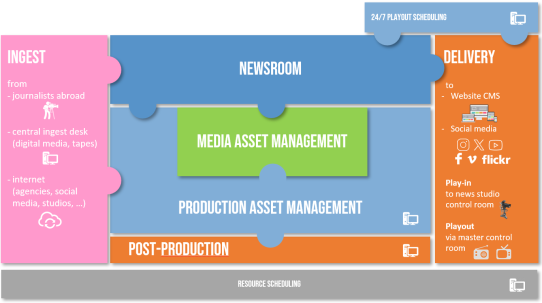
How does a typical news production and publishing workflow look like?
Every production begins with planning, and news production is no exception. Once an idea for a particular topic is conceived, journalists, producers, operators and technical resources must be assigned. If the topic is deemed worth developing into a story, containers (placeholders) are created within the newsroom system and the production asset management system.
Later, reporter teams contribute video material from the field via file uploads, live streams or satellite signals. Journalists may download source footage from social media, archivists search for historical content, and agencies provide text wires, images and video clips via file transfer. All these assets are ingested into the system and fill the designated placeholders.

At this stage, journalists browse, select and pre-cut the various media assets. Editing operators then refine these materials to create master clips for different delivery platforms, including linear playout, VOD, images and text for websites, social media and content syndication.
Before publication, all production masters are reviewed and approved by supervisors and chief journalists. Finally, publishing operators take over to prepare content for broadcast in the news show and for distribution across platforms such as the company’s news website and social media channels, including YouTube, X, LinkedIn, Facebook, Instagram and others.
service architecture
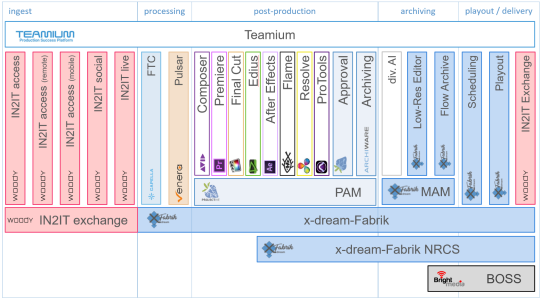
The Newsroom Control System (NRCS) is the backbone of news-related information research, aggregation, story editing, production, cross-media publishing, and monitoring. It supports both story-based and schedule-based journalistic workflows, targeting TV, radio, web, and social media publishing channels. For our NRCS, we offer our own development x-dream-Fabrik NEWS.
The Production Management System (PMS) is the heart of the news post-production. It functions as a Production Asset Management System (PAM), Workflow System, and Traffic System, managing audio and video assets from ingest to playout and publishing. For our PMS, we have selected our own development x-dream-Fabrik and for the PAM we’ve selected Projective’s Strawberry. For customers with distributed organizations, the PMS can be deployed at multiple facilities and interconnected to function as a unified global system.
The Media Archive (MAM) serves as the brain of news asset management. Unlike the PMS, it permanently stores all produced assets and relevant source footage. Additionally, it archives research materials (e.g., PDFs, DOC files, images) independently of audiovisual sources. As a MAM in our solution, we offer x-dream-Fabrik ARCHIVE.
The Web Content Management System (CMS) is the public face of our News Publishing Solution. It presents multimedia news content as a modern, dynamic website for audiences. Its primary focus is integrating audiovisual content into traditional text- and image-based websites. Driven by the NRCS, it automates the publishing and unpublishing process. That can happen via API integration or in case of Wordpress as CMS via an integration module.
Network architecture ingest
Ingest is a topic itself. Our "News Production and Publishing Solution" addresses all kinds of ingest. It makes use of the capabilities of our All Ingest Solution.

Central Ingest Station
The Central Ingest Station is the primary place for ingest operations. It's usually located in a room where all new content is brought to. A team of ingest specialists bringing files from various storage devices into the sales and delivery environment uses several dedicated workstations. While doing so, files are previewed, selected, pre-cut, and stitched. Technical metadata is automatically generated and descriptive metadata is added manually. The product used for that is Woody IN2IT access. It can transcode and re-wrap the files in the platform-internal format.
A variant of central ingest is offered when the source devices are attached to a server or files are being moved there before the ingest operations. In this case, Woody IN2IT exchange is the right choice. Most often via watch folders, new files are detected and automatically ingested with standard metadata. If metadata is to be manually set, Woody IN2IT access can act as a client to IN2IT exchange.
In other cases, the need is more about starting an automatic workflow for a bunch of files. In this case, x-dream-media's Workflow Starter allows you to remotely browse, preview, select and segment video files via a WebGUI. Compared to Woody's IN2IT, the x-dream-media Workflow Starter sends the files for processing to x-dream-media's Workflow Manager (WFM). WFM orchestrates transcoding, re-wrapping, QC, virus scanning and other operations. It's usually used to manage larger amounts of material.
Desktop or Kiosk Ingest
Besides the central ingest, desktop or kiosk ingest offers journalists and creatives to bring source material into the production environment from their workspaces or dedicated computers close to their desks. A dedicated computer allows addressing the risk of viruses professionally. Furthermore, it saves costs when expensive storage devices like Sony XDCAM HD are required. The functionality provided is identical to the central ingest desks. The product of choice is again Woody's IN2IT access in combination with x-dream-media's WFM and other tools for virus scanning and QC.
To serve a larger number of journalists at their desks for occasional ingests, the Upload web client of IN2IT exchange is a cost-effective alternative. Please see "Remote Journalists" below.
Social Media Ingest
There is the saying "What happens, happens first on YouTube". So, ingesting social media content is taking content from end-user publishing portals back to production environments. Often, a journalist has found an item of interest and faced the challenge of retrieving and ingesting the file. Download tools can be used in combination with the usual ingest tools. A more efficient method is using one integrated tool. In our solution, we use Woody IN2IT social for directly downloading and ingesting from social media and web portals.
Live Feed Ingest
Live sources can be provided by satellite feeds, lease line or studio transmissions. Traditionally, video is provided as HD-SDI signals. Nowadays we can find SMPTE 2110 or NDI sources too. The recording usually happens as a "crash-record" or scheduled record. For a fully integrated multi-camera or multi-feed recording, our solution is based on Woody IN2IT live ingest software. It supports the recording of SDI, NDI, SMPTE 2110 studio signals and many types of web streams.
When metadata handling and integration is less important during live recording x-dream-media's Broadcast Recorder is a perfect alternative for recording to disk and processing via x-dream-media's WFM workflow orchestrator.
For connecting remote interview guests from their mobile phones, laptops or PCs, we provide you with MultiCAM's AirBridge. It converts your master control room to a video call-in center. For more static or reoccurring connections, Medialooks Video Transport is the video engineers Swiss knife.
Tape Ingest
Even though tape might be dead, archives often still consist of tapes. Sometimes tapes are still used in production or for transportation. Consequently, our ingest solution addresses this by making use of recording software in combination with x-dream-media's WFM for ingest workflows or Woody's IN2IT exchange for PAM ingest.
Remote Journalists & Contributors
Although journalists in the field and contributors provide content occasionally and in smaller volumes, there are many of them. Therefore, a simplified way to up- and download video files with related metadata is required. Tools have to be accessible globally and intuitive to use. We address these needs by Woody' upload WebGUI for IN2IT exchange. It allows to contribute from remote directly into the production chain as an operator on-site would do.
A special variant of remote ingest is offered, when firstly a workorder is received and afterwards a production result is handed back. In this case, x-dream- Fabrik PROXCHANGE is a brilliant solution for extending on-premises workflows by integrating external production partners. A workorder is received via a so-called exchange job. These are communication threads that are restricted to individual users or groups. They take in the essence files to work on and further metadata that describes the workorder. The contributor has access to their communication jobs as a permanently registered user or an operator invites them to a temporary room.
Remote Offices & Facilities
Staff in remote offices or production facilities require tight integration into the systems of the main facility in order to be as productive as possible. Larger facilities can be equipped as the main facility. Smaller facilities get provided with a fully featured but smaller scale system. In both cases, the users interact with a local system that sends and retrieves the files and metadata to and from the main facility as a background process.
New Agency Feeds
Today news agencies and other B2B content supplier deliver their assets whenever possible via internet. News agencies most often supply a server to receive their content. Other suppliers utilize legacy FTP or UDP accelerated transport (e.g. Signiant or Aspera). In contrast to movie production content security is most often less relevant. But speed and flexibility matter! Our ingest to news production and publishing has connectors to all relevant news feed suppliers. Based on existing frameworks any other supplier can be easily connected.
Processing
After files and metadata have been ingested, fully automated actions can take place, such as transcoding and re-wrapping to a house format or browsing proxies, quality control, audio processing (e.g. normalising), or video processing (e.g. standard conversions). Advanced actions like audio transcriptions for timed metadata and subtitle creation, translations of metadata and subtitles or face recognitions can be added for automatic metadata creation. Finally, assets (files + metadata) are handed over to the production system(s). For instance, while a high-resolution file is moved and checked into the production asset management system (e.g. Interplay PAM), a low-resolution browsing proxy is made available to the media asset management system (MAM) or the newsroom control system (NRCS).
Network Architecture Post-Production
The post-production in news dramatically differs from usual creative craft editing: time matters! Journalists need to preview, select and rough-cut source footage as soon as it gets available. Often this might be enough for a story to get published (at least on web and social media). Only a voice-over has to be added. In other cases, a story or publishing target (e.g. TV) requires more efforts (e.g. graphics are required) in craft editing.
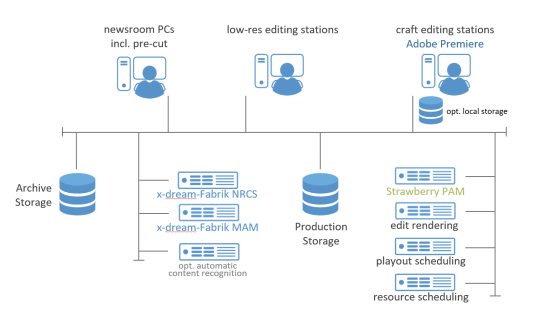
Low-resolution Pre-cut
Journalists have access to all incoming audiovisual feeds from the web UI of the News Room Control System (NRCS). They can add audio, video, graphic files to the stories they are working on. This information gets synchronized with no delay to the Production Management System (PMS). Both systems share the same web user interface. Thus, journalists can pre-cut stories in the low-resolution rough-cut editor of the PMS without leaving their desk. Voice-over can be added but needs to be recorded in a silent environment. The result can be conformed as a server-side process at any time. Afterwards a new asset becomes available for publishing.
High-resolution Journalists Editing
Alternatively, journalists could open Adobe Premiere (or any other editing suites) on their PCs and access the exact same story-related file collection via a panel integration to the PMS. Now they have all the flexibility in editing offered by a professional editing application. To make the editing result available for publishing they just need to render the timeline and move it back to the story bucket.
Craft Editing
The craft editing technically equals the high-resolution journalists editing but takes place in dedicated rooms with professional audio and video monitoring as well as audio recording equipment.
News production follows a well-defined production process that consists of manual journalistic work, automated processing and human interactions. For instance, it is not allowed to publish or air the story prior to review and approval by a chief editor and head of news. Such business processes can be "implemented" within the Production Management System. Once a story is edited, all relevant persons are notified automatically and asked for approval. In case of a disagree, the journalist and editors are notified, feedback information is provided and changes to perform are requested. On approval, the content is automatically made available to the publishing and playout systems, the NRCS is notified as well. The system continuously informs supervisors about the progress.
Network architecture Play-in, Playout and publishing

Content Publishing
The publishing action is initiated by the NRCS. Expected content could have been scheduled for publishing and playout in advance. In this case, it is immediately published and gets available for playout according to the rundown. Alternatively, the newly edited content shows up in the NRCS within the related story bucket. It is available for publishing at any time and at any target channel. That way a story can evolve over the time at different publishing channels.
For linear studio play-in or playout (TV and radio) the content is moved by the NRCS to the playout server and the playout automation is updated accordingly. For non-linear publishing (web and social media) the content is transcoded and uploaded to the related systems.
Within our solution we propose various Playout Software for integrated studio play-in and playout.
Partners

newsroom control system, media asset management system, end-to-end integrations
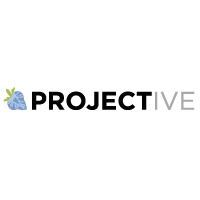
Production Asset Management

Integration & Workflow Orchestration

File, Live and Metadata Ingest
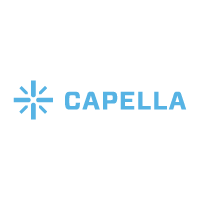
File Transcoding
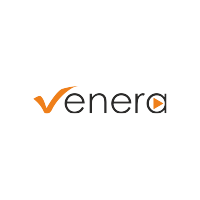
Video Quality Control

Program Planning
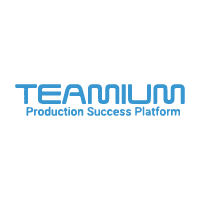
Resource Planning

